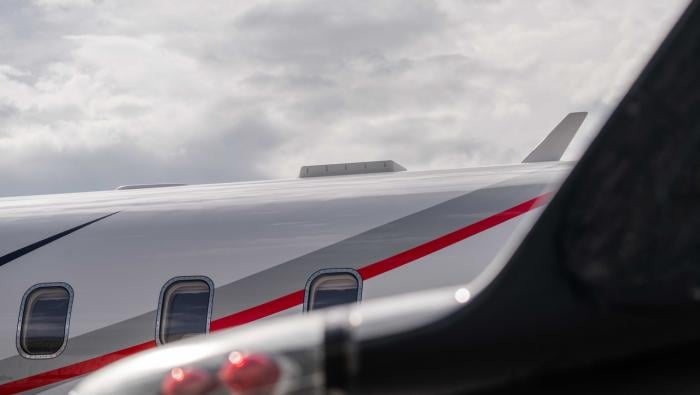Aviation differs from other forms of transportation in a number of ways. One that stands out is our collection and use of operational data on everything from what we load into the baggage compartment to the weight of the fuel we upload and of the passengers we board.
One area of data collection that is critical is the aircraft’s maintenance condition. Operators and regulators are required to record and track a substantial amount of maintenance data, and it is imperative that they do if we are to predict accurately what we must accomplish to ensure the airworthiness of the aircraft we rely on.
When we talk about maintenance data, most of us think about what occurs within a hangar or in a facility that fixes the many components sent to specialty repair centers. But that is only part of the story. One element of the data collection process that is not often mentioned is the aircraft logbook. It is the source that reveals the present condition and the recent history of a particular aircraft. Both flight crews and maintenance technicians use the logbook daily for that purpose. The FARs require both the pilot and the maintainer to record problems and defects in the logbook and, further, that maintenance technicians record the corrective action taken to repair the problem or defect.
The system is a straightforward one that has served aviation well for many years, but for it to work we must make the required entries. Occasionally during my years working as a mechanic, a pilot would see me on his way out of the facility and tell me that he had forgotten to write up something and asked if I would take care of it, which I would. Sometimes the item forgotten would be a minor squawk, but sometimes it would be of greater importance. Occasionally an FAA inspector would find something that needed attention and would give us the opportunity to take corrective action without using the more formal process that can lead to bigger problems for any aircraft operator.
The secret for using the easier process is prompt action to fix whatever concerns the inspector has raised. When an issue is handled swiftly this way, it is not a big deal.
Address Issues Promptly
Recently I received a press release issued by the U.S. Attorney’s office in New York indicating that some of us may have forgotten the importance of acting swiftly when the FAA inspector raises a concern.
The press release reads, “According to the complaint filed today [Sept. 8, 2005] in U.S. District Court in Brooklyn, on Nov. 17, 2003, an FAA inspector who was traveling as a passenger on an American Airlines flight between Orlando International Airport in Florida and La Guardia Airport in New York observed fuel leaking from the wing of the aircraft, a McDonnell Douglas MD-82 passenger jet, in the course of the flight. The inspector reported his observation to the flight crew and pointed out the location of the leak to the pilot of the aircraft following its arrival in New York.
“Despite the inspector’s warning, American Airlines took no action to adequately inspect, repair or maintain the aircraft and correct the leak–rendering the aircraft unairworthy–and failed even to note the inspector’s report of a leak in the maintenance logs as required by FAA regulations. Instead, American Airlines chose to fly the airplane on an additional 53 commercial flights, deferring appropriate action until Dec. 2, 2003, when the airplane underwent a regularly scheduled intensive maintenance check. In the course of the maintenance check, the complaint alleges that a fuel leak was discovered in the same area that had been reported by the FAA inspector weeks earlier.”
Ignoring a Second Chance
It seems reasonable to suggest that what we have here is a pilot who failed to record a problem in the aircraft logbooks. But it doesn’t end with the pilot. The next day the inspector telephoned the maintenance manager at La Guardia to learn what had been done to repair the fuel leak; the manager told him that no corrective action had been taken.
I just could not believe what I was reading. What could these aviation professionals have been thinking? All that was required was an entry in the logbook followed by some form of action. Never mind that fuel leaks are a major concern and a real risk to safe flight. Have we become so complacent because our aircraft are so reliable?
Why were they not thinking of fuel streaming off the wing and finding its way into the rear-mounted engines, a possibility that would increase the risk of disaster?
What could the maintenance manager have been thinking when the FAA called to check? Did he think the problem would just go away? Was he feeling that it was no longer his problem as the aircraft was probably out of La Guardia by this time? Did he tell someone above him, and who dropped the ball by failing to follow up?
Well, the FAA did not go away, and on Dec. 2, 2003, the aircraft was brought in for maintenance and a fuel leak was repaired. The cost to the operator will be steep and will include attorneys’ fees in addition to the $1 million fine. The U.S. Attorney has also asked for injunctive relief against American Airlines, which could have major cost implications for all operators.
As members of the aviation community, we learn early on to respect the FAA and to exercise the wisdom of engaging the agency in constructive dialog. No matter how hard I try, I cannot figure out just what these aviation professionals at La Guardia were thinking.







